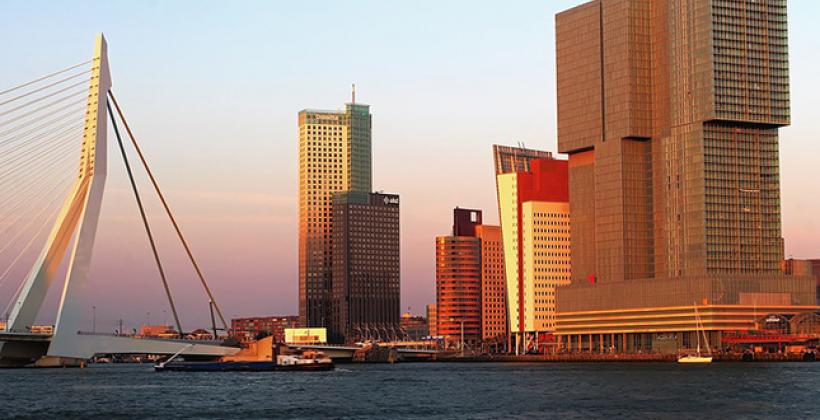
Location
Description
The city of Rotterdam participated in the CELSIUS project with a focus on two interventions: development of an energy system in the vertical city of De Rotterdam and the creation of a heat hub aiming to increase the effectiveness of the waste heat transportation network.
De Rotterdam is a 160 000 m2 mixed-use building with housing, commercial and recreational functions. The implemented measures as part of the CELSIUS project include a high-temperature hot water heat distribution system, which supplies water to the residential and hotel sections, and a low-temperature heating system, which allows for heat to be supplied to the offices, commercial premises and shops. Cooling is centrally generated through three water-cooled compression chillers connected to the New Meuse River by a cold-water inlet. The apartments in the building have comfortable floor heating and cooling, while the renewable energy saves space because there are no radiators and boilers, and air conditioning is unnecessary. Also, the building re-uses the heat recovered from exhaust air from the ventilation systems. Part of the electricity and heat demand is produced in a biomass-fired CHP, which is integrated in the building.
The heat hub is a physical structure placed at a strategic location near the waste heat transportation infrastructure and the district heating system in Rotterdam. It focuses on increasing the effectiveness of the waste heat transportation network of Warmtebedrijf Rotterdam with buffering, heat balancing, smart ICT and forecasting. It allows for an increase in total heat delivery of the waste heat network without any additional investments in a new transport infrastructure or by means of additional heat sources.
Demo Site Expected Impact
The heat buffer consists of a hot (approximately 98°C) and a relatively cold layer (approximately 60°C) and has a heat storage capacity of approximately 185 MWh at a temperature difference between the cold and hot layer of 30°C. The total amount of heating energy fed into the storage is 4000 MWh/yr, which reduces the use of primary energy to 3400 MWh per year and the CO2 emissions to 800 tonnes per year.
Technologies
Buildings and energy
*Information regarding the technical and financial performance will be available at a later stage.
The interventions in Rotterdam include:
Energy systems integration
- District heating
- The heat hub, operational since the last quarter of 2013, acts as a distribution station and connects the existing district heating systems in the south and north of Rotterdam.
- Large-scale storage
- Thermal storage
- The heat hub has a well-insulated buffering tank. The capacity of the buffer is 185 MWh and the discharge capacity is 30 MWth. By placing the tank in the middle of the distribution network, instead of at the traditional location in the vicinity of the production facilities, Warmtebedrijf Rotterdam increases the effectiveness of the buffering capacity because the buffered heat is closer to the end-consumer. There is also a positive effect on the local air quality because less gas-fired boilers are needed for peak load.
- Waste heat recovery
- Cogeneration (CHP)
ICT
- Demand response
- For better forecasting and heat balancing, a smart ICT system is under development. The system is a crucial element to further optimise heat sources, buffers, new connections and pumping stations in the waste heat transportation infrastructure of Warmtebedrijf Rotterdam and the entire district heating system.
Energy Carriers
- Heat/district heat
- Waste heat
Energy Systems Types
- Infrastructure & System Integration
- DHC extension
- Storage
- Thermal Storage
Thematic Field
- Energy System(s) Integration
